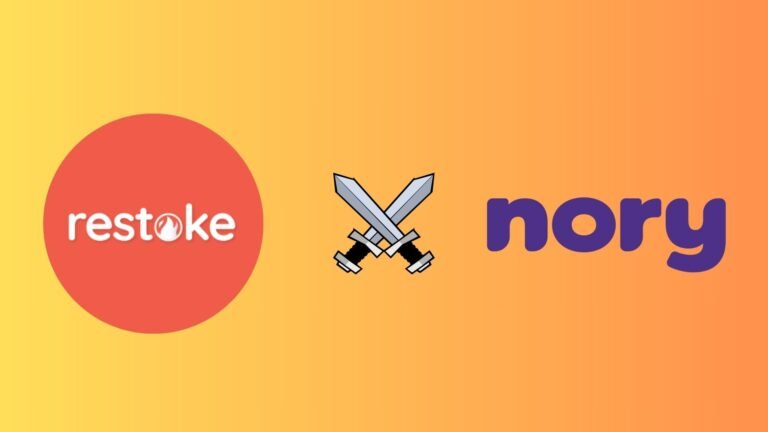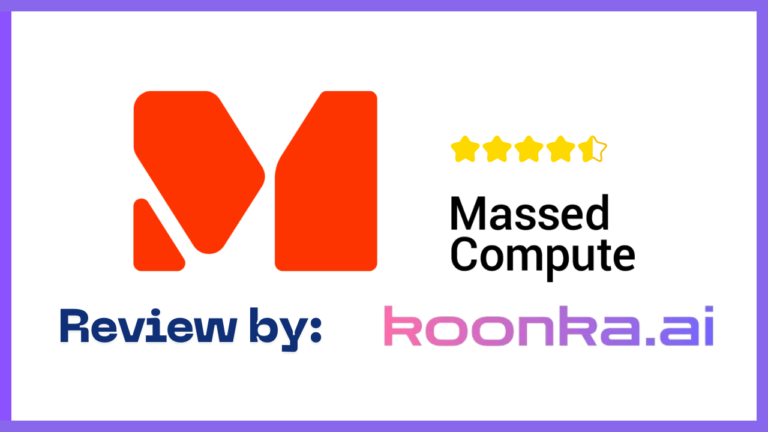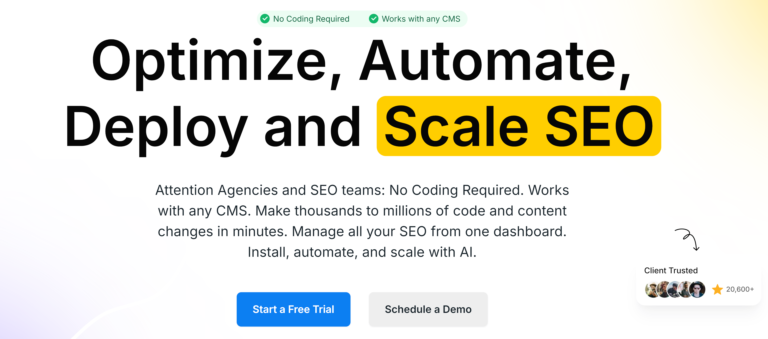NexGen Cloud Review: A Deep Dive into Their AI Cloud Solutions
NexGen Cloud is positioning itself as a major player in the AI cloud solutions market, providing high-performance computing infrastructure for enterprises and researchers. With a strong emphasis on GPU-powered AI workloads, the company claims to offer industry-leading solutions that compete with the likes of AWS, Google Cloud, and Azure.
But how well does NexGen Cloud deliver on its promises? In this NexGen Cloud review, we critically analyze their offerings, strengths, and weaknesses to determine if they are a viable option for AI-driven enterprises.
Table of Contents
NexGen Cloud: Key Takeaways
- NexGen Cloud provides AI-focused cloud infrastructure with powerful NVIDIA GPUs.
- Their AI Supercloud offers managed Kubernetes, MLOps support, and high scalability.
- NexGen’s Hyperstack provides GPU-as-a-Service with a flexible pay-as-you-go model.
- NexGen Labs offers AI strategy consulting, R&D, and training services.
- Lack of real-world benchmarks is an area of concern.
- Over-reliance on the NVIDIA ecosystem could limit hardware flexibility.
NexGen Cloud: Overview
| Services | AI Cloud Computing, GPU-as-a-Service |
| GPU Models | NVIDIA HGX H100, GB200 NVL72/36 |
| Networking | High-Speed InfiniBand, Quantum-2 InfiniBand |
| Storage | GPUDirect Storage |
| Pricing Model | Enterprise Custom, Pay-as-you-go |
| Scalability | Thousands of GPUs, On-Demand Scaling |
| Data Sovereignty | EU & Canada Compliance, Global Availability |
| Managed Services | Kubernetes & MLOps, Kubernetes-based GPU Management, AI Strategy & Training |
NexGen offers 3 main products: AI Supercloud, Hyperstack and NexGen Labs.
Here are some pros and cons of each product:
1. AI Supercloud by NexGen:
Strengths:
- High-Performance Computing: AI Supercloud features cutting-edge GPUs like the NVIDIA HGX H100 and the upcoming NVIDIA GB200 NVL72/36, delivering some of the most powerful AI computing capabilities available.
- Customisation Options: Enterprises can tailor hardware and software configurations to optimize workloads, ensuring efficiency and performance.
- Managed Kubernetes & MLOps Support: The inclusion of managed Kubernetes and MLOps support simplifies deployment and management for AI workloads.
- Reference Architecture from NVIDIA: As an official NVIDIA partner, NexGen Cloud ensures that its infrastructure is optimized for AI/ML workloads, enhancing efficiency and compatibility.
- Data Sovereignty Compliance: Deployments in Europe and Canada ensure compliance with GDPR and other data privacy regulations, an advantage for clients wary of US cloud providers.
Weaknesses:
- Dependency on NVIDIA Ecosystem: With no mention of alternative hardware like AMD MI300X or custom AI chips, an AI developer has limited flexibility in choosing different architectures.
- Marketing Hype vs. Real Performance: While the company claims to offer “unparalleled power,” there are no public benchmarks comparing NexGen Cloud’s performance against AWS, Azure, or Google Cloud.
- Scalability Concerns: While NexGen Cloud claims to scale to thousands of GPUs, details on workload balancing and resource allocation in real-world scenarios are scarce.
2. Hyperstack by NexGen:
Strengths:
- GPU-as-a-Service Model: Hyperstack enables enterprises to rent GPU power on-demand, making AI training and inference more accessible.
- Pay-for-What-You-Use Pricing: The cost structure is customer-usage-based, reducing financial overhead for organizations with fluctuating AI workloads.
- High-Speed Networking & Storage: The integration of NVIDIA Quantum-2 InfiniBand and GPUDirect Storage ensures ultra-low latency and high data throughput.
- On-Demand Workload Bursting: AI researchers and enterprises can instantly deploy additional resources as needed, ensuring flexibility during high-demand periods.
Weaknesses:
- Over-Reliance on Kubernetes: While Kubernetes is powerful, many enterprises lack an in-house employee to efficiently manage containerized AI workloads, adding a potential learning curve for this job.
- Cost Competitiveness vs. Public Clouds: AWS, GCP, and Azure offer cost-effective alternatives such as spot instances and preemptible VMs, making it unclear whether Hyperstack is more cost-effective.
3. NexGen Labs
Strengths:
- AI Strategy & R&D Consulting: NexGen Labs provides helpful guidance for enterprises navigating AI adoption, helping them strategize AI-driven transformation.
- Partnerships with Industry Leaders: The company’s affiliation with NVIDIA and other AI leaders ensures access to cutting-edge expertise.
- Training & Workshops: Offers educational programs for AI and ML, helping enterprises upskill their workforce for AI-driven applications and make continuous improvements.
Weaknesses:
- Redundancy with Existing Cloud Offerings: Major cloud providers like AWS and Google Cloud already offer in-house AI consulting and training, making it unclear whether NexGen Labs provides enough differentiation.
GPU Models in NexGen Cloud: A Deep Dive
NexGen Cloud offers some of the most powerful GPU models available today, making it a strong contender for AI and high-performance computing (HPC) workloads. Their infrastructure is built around NVIDIA GPUs, including the flagship HGX H100 and the upcoming GB200 NVL72/36 models.
These GPUs are designed for massive-scale AI training, deep learning, large language models (LLMs), and other compute-intensive tasks. Below, we break down the GPU models, their specifications, and how they compare to alternatives in the market.
NVIDIA HGX H100: The AI Powerhouse
The NVIDIA H100 Tensor Core GPU is one of the most powerful AI accelerators available today. It is built on TSMC’s 4nm process and features the Hopper architecture, which introduces major advancements in AI and HPC performance.
Key Features of the H100:
- 80GB HBM3 Memory: Provides ultra-high bandwidth, crucial for AI training and large datasets.
- Tensor Core Performance: Offers FP8 precision, delivering up to 4 petaflops of AI performance per GPU.
- Transformer Engine: Optimized for large language models (LLMs) like GPT-4 and future AI models.
- NVLink Support: Allows multiple H100 GPUs to communicate efficiently, forming a massively parallel AI system.
- Dynamic Programming & Sparsity Support: Improves efficiency in scientific computing and deep learning.
Use Cases for H100 GPUs:
- Training massive AI models like GPT, BERT, and DALL·E.
- Running large-scale scientific simulations.
- Powering real-time inference for AI applications.
- Enhancing HPC workloads that require extreme computational power.
Compared to its predecessor, the A100, the H100 delivers nearly 6x better AI performance, making it one of the best choices for next-gen AI applications.
NVIDIA GB200 NVL72/36: The Future of AI Compute
NVIDIA recently announced the Blackwell GB200 NVL72/36, an upcoming GPU system designed for exascale AI training and data center-level AI workloads. NexGen Cloud has hinted at integrating this model into their AI Supercloud, positioning themselves at the cutting edge of AI infrastructure.
Key Features of GB200 NVL72/36:
- Advanced Blackwell Architecture: A next-generation AI computing architecture focused on LLMs, generative AI, and high-end HPC tasks.
- NVL72 Configuration: Enables 72 GPUs to work together seamlessly, ideal for hyperscale AI training.
- Energy Efficiency Gains: Blackwell GPUs are expected to deliver superior performance-per-watt compared to Hopper GPUs.
- Improved AI Model Handling: Specifically optimized for LLMs exceeding 1 trillion parameters, making them essential for cutting-edge AI applications.
Since the GB200 GPUs are not yet widely available, performance benchmarks are speculative, but they are expected to outperform H100 GPUs by a significant margin.
Comparison with Alternative GPUs
While NexGen Cloud focuses exclusively on NVIDIA GPUs, other AI cloud providers like AWS and CoreWeave also offer AMD MI300X and custom AI accelerators such as Google TPUs. Here’s how NVIDIA GPUs stack up:
| Feature | NVIDIA H100 | NVIDIA GB200 | AMD MI300X | Google TPU v5 |
| Memory | 80GB HBM3 | TBD (Likely 192GB HBM3) | 192GB HBM3 | Custom (Similar to HBM) |
| AI Performance | ~4 PFLOPS (FP8) | Estimated 10+ PFLOPS | ~2.4 PFLOPS (FP16) | Optimized for AI |
| Energy Efficiency | High | Expected to be higher | Moderate | High |
| LLM Optimization | Yes (Transformer Engine) | Yes (1T+ parameter models) | Yes (Optimized for AI) | Yes (Google AI-focused) |
| Cloud Availability | NexGen, AWS, Google Cloud, CoreWeave | NexGen (Upcoming) | AWS (Limited), Azure | Google Cloud (Exclusive) |
While AMD MI300X is an emerging competitor, NVIDIA remains the industry leader in AI infrastructure due to its superior software ecosystem, including CUDA, TensorRT, and MLOps tools.
Final Thoughts on NexGen Cloud
NexGen Cloud is positioning itself as a specialized AI cloud provider, focusing entirely on high-performance NVIDIA GPUs rather than general-purpose cloud computing. This makes it an excellent choice for enterprises that:
- Need cutting-edge AI compute without relying on public cloud giants.
- Want dedicated GPU infrastructure optimized for AI and deep learning.
- Prefer European or Canadian data compliance over US-based cloud providers.
However, the lack of GPU variety (no AMD or TPU options) may deter some users looking for more flexibility.
NexGen Cloud presents itself as an ambitious AI cloud provider with a strong focus on high-performance GPU solutions. Their AI Supercloud and Hyperstack products provide a powerful infrastructure for enterprises looking to scale AI workloads.
However, limited hardware options and unverified performance claims leave room for skepticism.
If NexGen Cloud addresses these concerns, it could emerge as a formidable competitor to the cloud giants. Until then, enterprises should carefully evaluate their needs and compare NexGen Cloud’s offerings with more established alternatives before making a decision.







